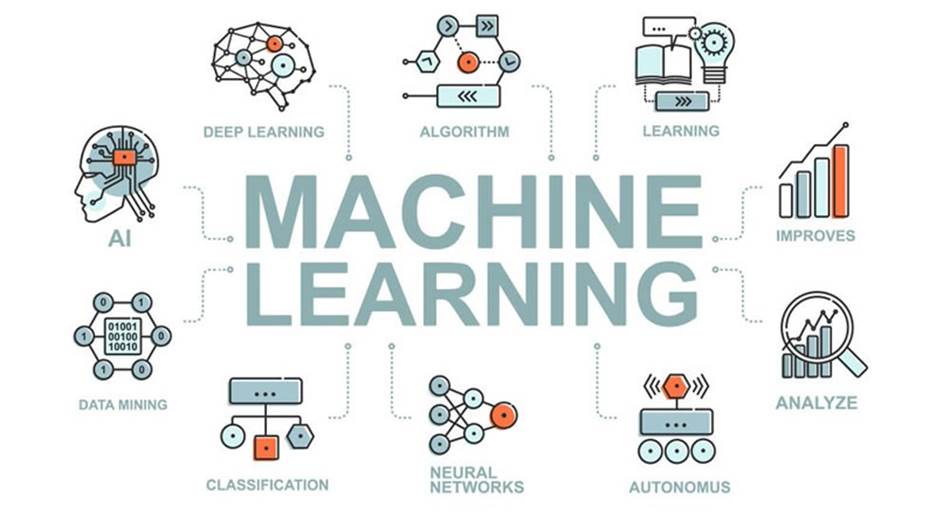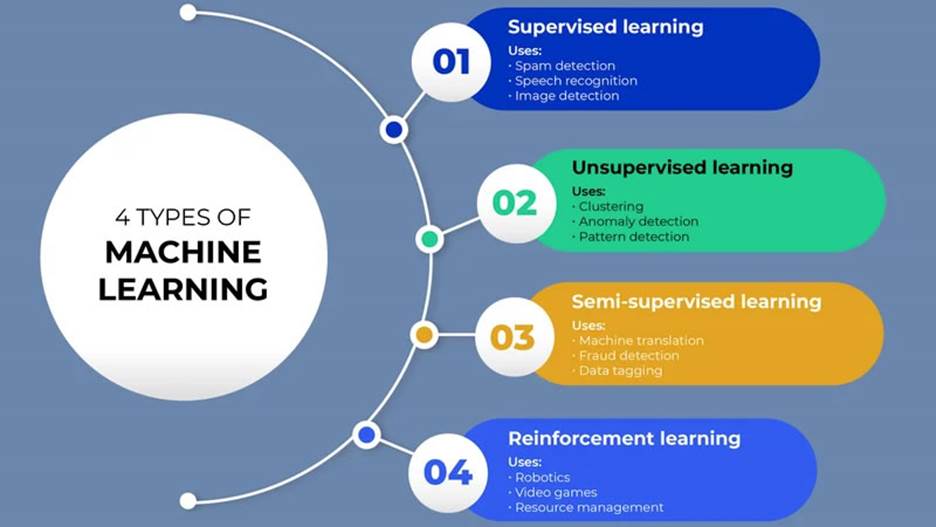Introduction
In an age dominated by digital devices, references to artificial intelligence (AI) and machine learning are practically omnipresent. Whether curating suggested movies on Netflix or navigating crowded urban streets in a self-driving vehicle, machine learning underlies a wide array of everyday technologies.
For novices, however, the discipline may seem forbidding. What precisely is machine learning, by which mechanisms does it operate, and how is it situated within the broader field of artificial intelligence? This guide demystifies the fundamentals of the subject, presenting concise explanations of its concepts, real-world applications, and prospective innovations.
What is Machine Learning?
Fundamentally, machine learning (ML) constitutes a subset of artificial intelligence that empowers computers to derive knowledge from datasets and subsequently enhance their proficiency without the need for explicit instructions. Rather than executing a rigid sequence of human-designed rules, ML algorithms discern recurring relationships in data and employ these insights to generate forecasts or make choices.

Consider the task of filtering unsolicited email. The classical approach of coding heuristics to identify frequently misspelled words, for instance, soon reveals its limitations. An ML model, conversely, is trained on an extensive corpus of messages, extracting the statistical traits that distinguish spam from legitimate correspondence and refining its skill concomitantly with exposure to new arrivals. In essence, the discipline invites computers to acquire knowledge from practice in a horticultural fashion analogous to human learning.
Machine Learning and Artificial Intelligence: Distinguishing Concepts
The terms “AI” and “machine learning” are frequently used synonymously, yet a clear distinction is essential for accurate discourse. A comparative outline clarifies the relationship: Artificial Intelligence (AI) is the overarching domain concerned with constructing systems that exhibit behavior typically attributed to human cognitive function, including deducing solutions, conducting logical reasoning, and deciphering natural language.
Machine Learning (ML), conversely, is a discrete, albeit influential, category within AI that concentrates on employing computational models and statistical techniques to derive patterns, gain insight from data, and forecast or categorize outcomes. The characterization can be paraphrased analogously: AI constitutes the conceptual vision, whereas ML is a principal instrument for realizing that vision.
An illustrative case strengthens the formulation:
AI embodies the blueprint for a vehicle capable of autonomous operation. ML embodies the computational procedures enabling the vehicle to identify pedestrians, detect stop signs, and infer driving context through the analysis of extensive annotated datasets.
A Pragmatic Overview of Machine Learning
Though ML occasionally appears to be a sorcery-like capability, it is governed by a systematic methodology. A prototypical implementation is described through the following stages:
1. Data Acquisition
Each ML endeavour commences with the gathering of data. The caliber and the volume of the incoming data critically influence the eventual effectiveness of the predictive or prescriptive model.
2. Data Preparation
Raw datasets undergo a series of transformations to enhance their usability. This step commonly includes removing duplicates, imputing or discarding missing values, and standardizing or normalizing numerical attributes.
3. Choosing an Algorithm
A suitable algorithmsuch as a decision tree, linear model, or neural network selected according to the problem domain. Options vary according to task type, whether it is a classification, regression, or clustering problem.
4. Training the Model
The selected algorithm is trained using a designated training dataset. During this phase, the model identifies patterns and constructs internal representations; for instance, distinguishing images of cats from images of dogs.
5. Testing & Validation
To assess generalization performance, the model is evaluated against an independent test dataset. Standard metrics such as precision, recall, or mean squared error quantify accuracy and reliability.
6. Deployment & Improvement
Once validated, the model is integrated into a production environment. It is monitored and updated continuously using newly acquired data, a technique referred to as continuous learning.
Types of Machine Learning
Machine learning is typically categorized into three principal approaches, each serving distinct problem characteristics:

1. Supervised Learning
In this paradigm, models are trained on datasets annotated with the correct output. By examining historical examples, the system learns to predict future labels.
Example: Using characteristics such as square footage, neighborhood, and number of bedrooms to estimate real estate prices.
2. Unsupervised Learning
The model operates with unlabeled data, autonomously extracting underlying structures or partitions without prior guidance.
Illustrative Context: segmenting client profiles for targeted marketing.
3. Reinforcement Learning
This paradigm grounds itself in iterative exploration; the model engages with an environment, collecting rewards or punishments as signals that shape subsequent behaviour.
Illustrative Context: instructing a bipedal robot to maintain stability or pitting an AI against grandmasters in chess.
Machine Learning Applications
Theoretical constructs now permeate operational realities:
Healthcare: interpreting radiographs to diagnose disease, quantifying patient deterioration probability, and expediting compound selection for therapeutics.
- Finance: identifying anomalous transaction patterns, evaluating borrower risk, and executing trades under algorithmically specified conditions.
- E-commerce: refining catalog search through personalized item suggestions and adjusting prices in real time based on demand forecasts.
- Transportation: leveraging sensor fusion for self-driving vehicles and implementing real-time routing optimisation.
- Business: deploying intelligent virtual agents for customer interaction and forecasting product demand.
The corpus of applications is expanding continuously as sectors deepen their understanding of ML potentials.
The Role of Machine Learning Consulting
For numerous enterprises, successful ML adoption is both technically demanding and resource-intensive. Machine learning consulting firms, or independent subject-matter experts, assist in the conception, realisation, and diffusion of bespoke ML initiatives.
Aligning strategic objectives with specific ML opportunities.
Offering specialised guidance in data sanitation, feature engineering, model selection, and iterative validation.
Crafting solutions that scale sustainably over time. Providing continuous support to ensure constant enhancement. For organizations not equipped with internal talent, targeted machine-learning consultation expedites digital transformation.
Obstacles in Machine Learning
- Data quality: Inaccurate, incomplete, or biased datasets yield unreliable forecasts.
- Technological complexity: Deployed algorithms demand specialized skills and robust infrastructure.
- Ethical constraints: Privacy, fairness, and model interpretability exert normative pressure.
- Economic feasibility: Budgetary constraints render bespoke solutions prohibitive for smaller firms.
Addressing these barriers necessitates deliberate planning, domain expertise, and a principled commitment to ethics.
The Horizon of Machine Learning
Accelerating gains in processing capacity, distributed cloud infrastructure, and expansive datasets ensure sustained influence over enterprises and daily life. Indicators warranting strategic monitoring include:
- Transparent algorithms: Deployed models disclose decision pathways for increased interpretability.
- Automated model engineering: Guided learning automates repertoire generation and tuning for analysts.
- Connectivity with sensor networks: Integrated deployments deploy predictive capacity in real time.
- Life-science applications: Tailored preventive care and bio-personalisation identify anomalies earlier.
- Sustainable model design: Computational efficiency targets shrinking carbon footprints.

With these trajectories, machine learning will not only robustly modernize sectors and activities, but it will also gently reshape normative interaction with technology.
Conclusion
Machine learning has transitioned from vision to reality, fueling advances across multiple domains. An informed grasp of what machine learning entails, the mechanisms that underpin its operations, and its distinction from artificial intelligence enables us to recognize its strategic importance. Guided by academic inquiry, commercial deployment, and targeted consulting, this technology is establishing new paradigms for analysis and judgment.
Individuals new to the discipline should adopt a phased approach. Start by mastering fundamental concepts, reviewing practical examples, and incrementally expanding the body of knowledge. While the full architecture is sophisticated, the guiding principle remains straightforward: enable systems to derive predictive insight from accumulated experience.
1. What is machine learning in simple terms?
Machine learning refers to the methodology of instructing systems to derive knowledge from datasets and refine performance without detailed rule-based coding.
2. What is the difference between machine learning and AI?
Artificial intelligence encompasses any strategy by which machines replicate cognitive tasks, whereas machine learning constitutes the AI subset predominantly oriented toward data-driven knowledge acquisition.
3. What are the types of machine learning?
The primary categories are supervised learning, which employs labelled data to train predictive models; unsupervised learning, which discerns structure in unlabeled datasets; and reinforcement learning, which optimizes actions through interaction with an environment.
4. Why do businesses need machine learning consulting?
Specialised consultancy assists organizations in adopting machine learning programs efficiently, furnishing in-depth expertise, bespoke implementation frameworks, and scalable architecture aligned with strategic objectives.
5. Is machine learning indeed the future?
Affirmative. Ongoing improvements in data availability, processing capacity, and AI scholarship ensure machine learning will relentlessly reshape sectors and everyday activities alike.

